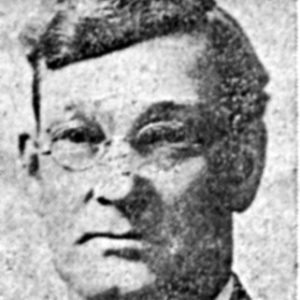calsfoundation@cals.org
Patterson (Woodruff County)
| Latitude and Longitude: | 35º15’24″N 091º14’06″W |
| Elevation: | 200 feet |
| Area: | 1.13 square miles (2020 Census) |
| Population: | 310 (2020 Census) |
| Incorporation Date: | not available |
Historical Population as per the U.S. Census:
|
1810 |
1820 |
1830 |
1840 |
1850 |
1860 |
1870 |
1880 |
1890 |
1900 |
|
– |
– |
– |
– |
– |
– |
– |
– |
– |
– |
|
1910 |
1920 |
1930 |
1940 |
1950 |
1960 |
1970 |
1980 |
1990 |
2000 |
|
– |
261 |
276 |
284 |
357 |
324 |
417 |
567 |
445 |
467 |
|
2010 |
2020 |
|
|
|
|
|
|
|
|
|
452 |
310 |
|
|
|
|
|
|
|
Patterson, located in the southwestern part of Woodruff County, was once an important shipping point for the lumber industry. Today, its economy relies on farm services and granaries.
Patterson, like many other settlements, was not always called by that name. It began when the B&B Railroad tracks were built across the Missouri Pacific tracks in the 1880s. Rufus Martin was the construction engineer on the project, and the place where the tracks crossed was named Martin’s Junction. Sanders Sawmill on the Cache River floated logs down the river to Martin’s Junction for shipping. Several other sawmills in the area, as well as a stave mill, used the point for shipping, and businesses began to spring up. At some point, the railroad changed the name in honor of a local family, and it became Jelks.
A momentous year for the community was 1909. The McCrory, Beedeville & Southern Railway was built into Jelks, and business boomed. That year, Marshall Patterson moved from Augusta (Woodruff County) to Jelks and built an expensive house, which is still occupied. Patterson owned most of the land around Jelks; operated a telephone business between the Woodruff County towns of Augusta, Cotton Plant, and DeView; and was a prominent politician, holding almost every political office in the county and serving as a representative and a senator in the state legislature. He is most remembered for apprehending a pair of train robbers in 1893 during his tenure as Woodruff County sheriff. As a reward, the Missouri Pacific Railroad gave him a lifetime pass on its lines.
Not wanting his five children to travel to McCrory to school, Patterson built a school in Jelks, and his wife became the first teacher. (The school later consolidated with McCrory in the 1950s.) Finally, Patterson pulled some political strings and had the town’s name changed to Patterson. The railroad continued to call the town Jelks for several years, causing much confusion, and some natives of the area still call it by that name.
Patterson has a grocery store, a restaurant, a fertilizer company, and two large granaries. Farmers Liquid Fertilizer opened in 1957. The population and economy of Patterson have changed little over the years. Trains still stop there occasionally, but only so riders can grab a sandwich from the grocery store that sits by the tracks. It has a post office and a new city hall, which was built after a 2003 tornado destroyed the old building. John Davis Manor, a housing complex for low-income senior citizens, was built in Patterson in 2000. The city limits have been extended to U.S. 64, and four businesses have been established along the highway.
For additional information:
Herndon, Dallas Tabor. Centennial History of Arkansas. 3 vols. Chicago: S. J. Clarke Publishing Co.: 1922.
Jeffries T. M. “Now it is Patterson.” Rivers and Roads and Points In Between 6 (Spring 1978): 15–17.
Paula Harmon Barnett
McCrory, Arkansas
 Patterson Street Scene
Patterson Street Scene  Marshall Patterson
Marshall Patterson  Woodruff County Map
Woodruff County Map 




Comments
No comments on this entry yet.